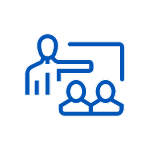Module 1.0 Cloud Architecture
Use the appropriate cloud service model.
- Cloud service models
- Shared responsibility model
Explain concepts related to service availability.
- Resource availability
- Disaster recovery (DR)
- Multicloud tenancy
Explain cloud networking concepts.
- Public and private connections to the cloud
- Network functions, components, and services
Compare and contrast storage resources and technologies.
- Tiered storage
- Disk types
- Storage types
- Performance implications
- Cost implications
Explain the purpose of cloud-native design concepts.
- Cloud-provided managed services
- Microservices
- Loosely coupled architecture
- Fan-out
- Service discovery
Compare and contrast containerization concepts.
- Stand-alone
- Workload orchestration
- Networking
Compare and contrast virtualization concepts.
- Stand-alone
- Clustering
- Cloning
- Host affinity
- Hardware pass-through
- Network types
Summarize cost considerations related to cloud usage.
- Billing models
- Resource metering
- Tagging
- Rightsizing
Explain the importance of database concepts.
Compare and contrast methods for optimizing workloads using cloud resources.
- Compute resources
- Orchestration
- Workflow
- Network
- Storage
- Managed services
Identify evolving technologies in the cloud.
- Machine learning and artificial intelligence (AI)
- Internet of Things (IoT)
Module 2.0 Deployment
Compare and contrast cloud deployment models.
- Public and Private
- Hybrid
- Community
Implement appropriate deployment strategies.
- Blue-green
- Canary
- Rolling
- In-place
Summarize aspects of cloud migration.
- Migration types
- Resource allocation
- Considerations
- Application migration strategies
Use code to deploy and configure cloud resources
- Infrastructure as code (IaC)
- Configuration as code (CaC)
- Scripting logic
Provision the appropriate cloud resources.
- Repeatability
- Drift detection
- Versioning
- Testing
- Documentation
- Formats
Module 3.0 Operations
Configure appropriate resources to achieve observability.
- Logging
- Tracing and Monitoring
- Alerting
Configure appropriate scaling approaches.
Use appropriate backup and recovery methods.
- Backup types
- Backup locations
- Schedule
- Retention and Replication
- Encryption
- Testing
- Recovery types and Options
- Manage the life cycle of cloud resources.
- Patches
- Updates
- Data
4.0 Security
Explain vulnerability management concepts.
- Common Vulnerabilities and Exposures (CVEs)
Compare and contrast aspects of compliance and regulation.
- Data sovereignty
- Data ownership
- Data locality
- Data classification
- Data retention
Implement identity and access management.
Secure access to the cloud management environment
- Authentication models
- Authorization models
- Accounting
Apply security best practices.
- Zero Trust
- Benchmark
- Hardening
- Patching
- Encryption
- Secrets management
- API security
- Principle of least privilege
- Container security
Apply security controls in the cloud.
- Endpoint protection
- Data loss prevention (DLP)
- Intrusion prevention system/intrusion detection system (IPS/IDS)
- Distributed denial-of-service (DDoS) protection
- Identity and access management (IAM) policies
- Firewall
Monitor suspicious activities to identify common attacks.
- Event monitoring
- Deviation from the baseline
- Unnecessary open ports
- Attack types
Module 5.0 DevOps Fundamentals
Explain source control concepts.
- Version management
- Code review
- Pull request
- Code push
- Code commit
- Code merge
- Branch management
Explain concepts related to continuous integration/continuous deployment (CI/CD) pipelines.
- Automation
- Code integration
- Code deployment - Build
- Testing
- Security
- Workflow
- Artifacts
- Repositories
Explain concepts related to integration of systems.
- Event-driven architectures
- Web services
Explain the importance of tools used in DevOps environments.
Elasticsearch, Logstash, and Kibana (ELK) stack
- GitHub actions
- Grafana, Jenkins, Kubernetes and Terraform
6.0 Troubleshooting
Given a scenario, troubleshoot deployment issues.
Incompatibility
Misconfigurations
- Outdated component definitions
- Deprecation of functionality
Outages
Troubleshoot network issues
- Network service unavailability
- Latency
- Bandwidth/throughput issues
- Network device misconfiguration
- Protocol incompatibility
- Protocol deprecations
- IP addressing issues
Troubleshoot security issues
- Cipher suite deprecations
- Authorization issues
- Software vulnerability issues
- Unauthorized software




